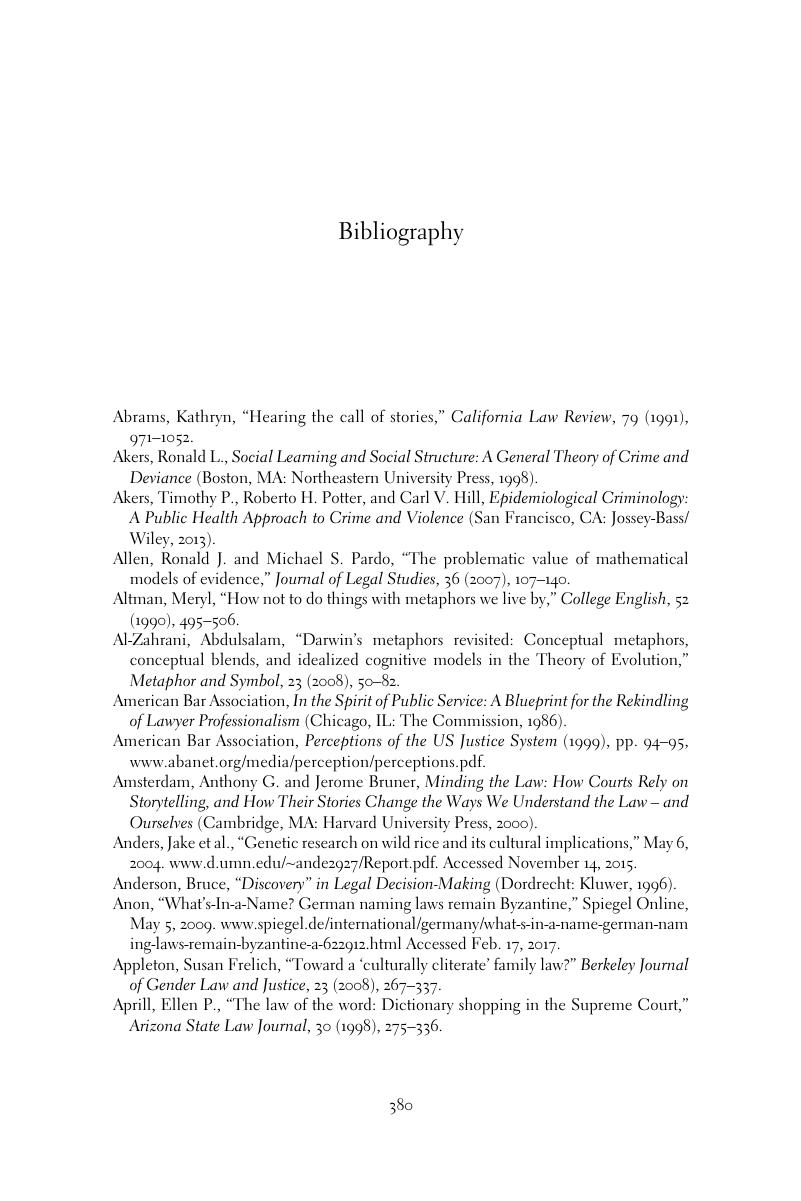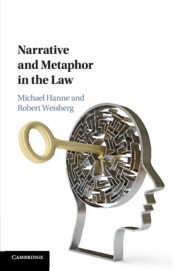Book contents
- Narrative and Metaphor in the Law
- Narrative and Metaphor in the Law
- Copyright page
- Contents
- Contributors
- Introduction
- Conversation I Narrative, Metaphor, and Concepts of Justice and Legal systems
- Conversation II Narrative and Metaphor in Legal Persuasion
- Conversation III Narrative and Metaphor in Judicial Opinions
- Conversation IV Narrative, Metaphor, and Gender in the Law
- Conversation V Narrative, Metaphor, and Innovations in Legal Thinking
- Conversation VI Narrative and Metaphor in Public Debate around Crime and Punishment
- Conversation VII Narrative and Metaphor in Human Rights Law
- Conversation VIII Narrative and Metaphor in Creative Work by Lawyers
- Conversation IX Narrative and Metaphor in Legal Activism
- Bibliography
- Index
- References
Bibliography
Published online by Cambridge University Press: 01 February 2018
- Narrative and Metaphor in the Law
- Narrative and Metaphor in the Law
- Copyright page
- Contents
- Contributors
- Introduction
- Conversation I Narrative, Metaphor, and Concepts of Justice and Legal systems
- Conversation II Narrative and Metaphor in Legal Persuasion
- Conversation III Narrative and Metaphor in Judicial Opinions
- Conversation IV Narrative, Metaphor, and Gender in the Law
- Conversation V Narrative, Metaphor, and Innovations in Legal Thinking
- Conversation VI Narrative and Metaphor in Public Debate around Crime and Punishment
- Conversation VII Narrative and Metaphor in Human Rights Law
- Conversation VIII Narrative and Metaphor in Creative Work by Lawyers
- Conversation IX Narrative and Metaphor in Legal Activism
- Bibliography
- Index
- References
Summary

- Type
- Chapter
- Information
- Narrative and Metaphor in the Law , pp. 380 - 413Publisher: Cambridge University PressPrint publication year: 2018



